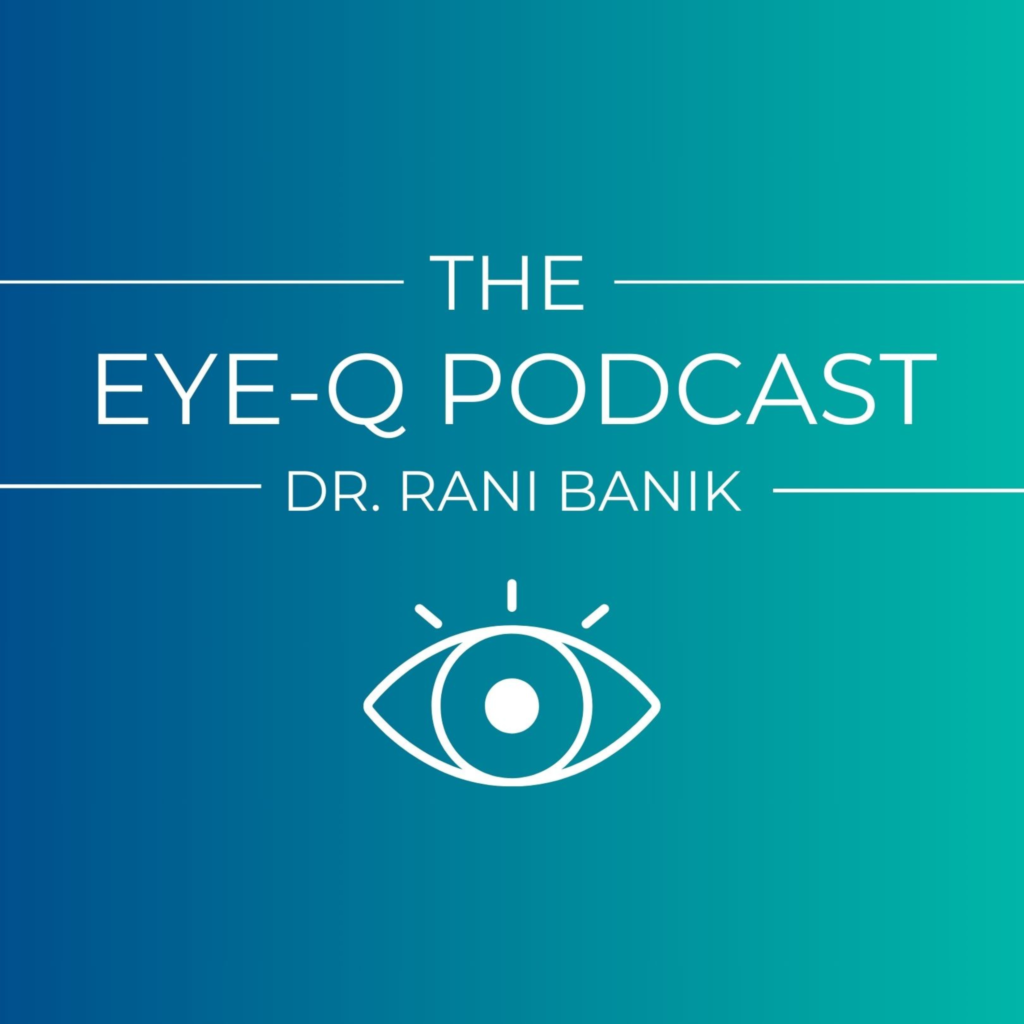Essential oils for eye health are drawing renewed interest among clinicians who treat migraine, ocular surface disease, and stress-related visual complaints. In this episode, neuro-ophthalmologist Rudrani Banik, M.D. speaks with Jodi Sternoff Cohen, founder of Vibrant Blue Oils, about how targeted blends and delivery methods may support the autonomic nervous system, brain function, and—indirectly—patient-reported visual comfort. The discussion explores vagus nerve stimulation, aromatherapy for migraine, topical application away from the eye, and reflex-point strategies clinicians may consider educating patients about.

Topics Covered
Understanding the Clinical Context
Essential oils for eye health most often arise in migraine, eyelid hygiene, and stress-sensitive visual symptoms. Start with how essential oils are used (inhalation vs. topical), where they should not be used (never in or on the eye), and why autonomic balance matters when visual complaints are amplified by stress or poor sleep.
Lead with mechanism and safety. Tie potential benefits to patient-reported outcomes—headache relief, relaxation, better adherence to non-pharmacologic strategies—without overpromising disease modification.
Essential Oils, Autonomics, and Vagus Nerve Stimulation
Cohen centers on restoring balance between sympathetic “fight-or-flight” and parasympathetic states. External vagus nerve stimulation points (behind the ear along the mastoid) and stimulatory oils (e.g., clove paired with lime) applied on the neck—not near the eye—are presented as a low-barrier way to encourage parasympathetic tone. Device-based stimulation for migraine also exists; oils can be positioned as a topical, wellness-oriented option.
In-practice tip: When patients ask about vagus nerve stimulation, educate: location = behind the earlobe on the mastoid; method = tiny, diluted amount of an appropriate oil; message = adjunctive wellness support, not a substitute for medical treatment.
Aromatherapy for Migraine: Practical Tips in Clinic
Dr. Banik highlights aromatherapy for migraine as a reasonable self-care tool, especially via inhalation, which reaches the limbic system quickly. Blends with lavender, peppermint, or frankincense may help some patients—through cooling, distraction, and perceived vasodilatory effects—while acknowledging that headache root causes vary (e.g., lymph stagnation or gallbladder meridian triggers).
Actionable guidance:
- Recommend inhalation first (waft from bottle, cotton pad, or wearable locket).
- For topical neck/temple use, insist on dilution and avoid ocular exposure.
- Document education as supportive care alongside evidence-based migraine management.
Topical Use: What to Avoid Near the Eyes and What to Recommend Instead
Essential oils for eye health must never be placed in the eye or directly on the eyelids. Point patients to pre-soaked, purpose-made eyelid pads (e.g., tea tree oil–based options) for Demodex-associated blepharitis and lid margin inflammation.
Chairside phrases:
- “Do not apply essential oils in or on your eyes.”
- “For lid hygiene, use only purpose-made lid wipes designed for ocular use.”
- “If irritation occurs, stop and contact our office.”
Reflex Points and Lymphatic Flow: Translating Concepts for Patients
Reflex points (feet/hands/navel) offer alternative sites for topical oils while keeping them away from the ocular surface. Gentle topical approaches along the neck may also support comfort where lymphatic congestion is suspected.
Communication tip: Present reflex-point use as a wellness option that may support relaxation and symptom perception—clearly adjunctive to standard care.
Case-Informed Perspectives: Stress, Fatigue, and the Parasympathetic Shift
Patients with stress-sensitive visual complaints (migraine, light sensitivity, dry eye symptoms exacerbated by anxiety) often benefit from a repeatable relaxation routine. This is where vagus nerve stimulation education and aromatherapy for migraine fit—clear instructions, conservative dosing, and firm safety rules.
One-minute at-home protocol (non-ocular):
- Choose a single well-tolerated oil (e.g., lavender for inhalation).
- Inhale for 30–60 seconds before bed or at headache onset.
- If using topically on neck/temples, dilute; keep hands away from eyes.
- Wash hands after application; never apply on eyelids or lashes.


